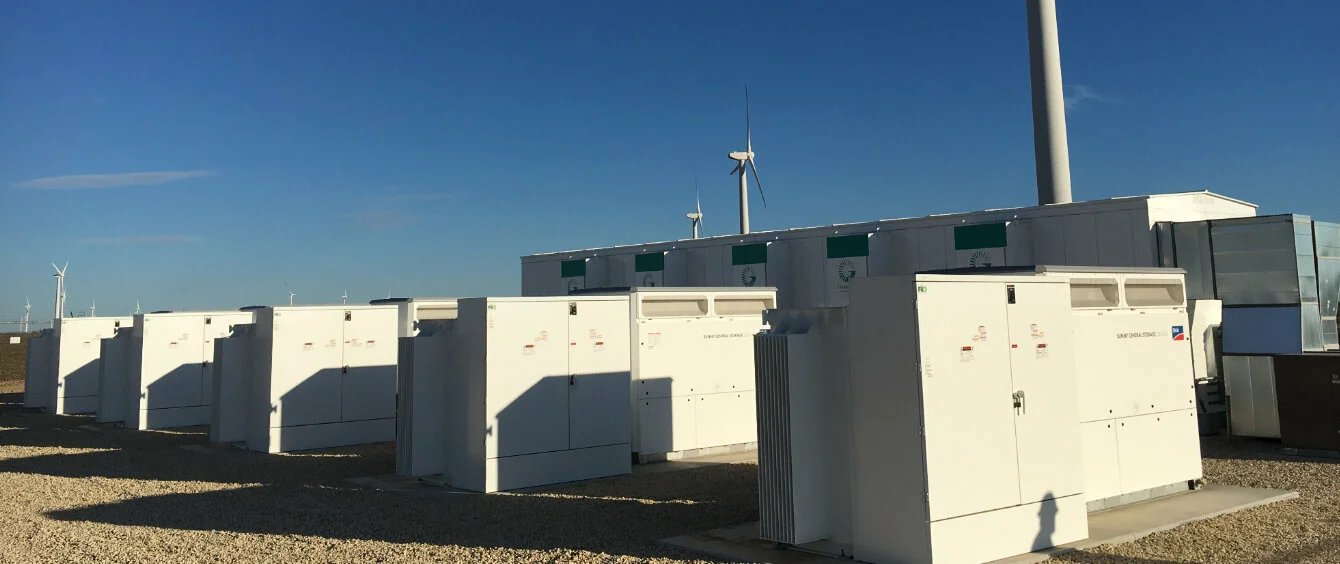Batteries are everywhere. From mobile phones to electric cars, we use stored energy in ever larger quantities. The dominant technology is lithium-ion, which, owing to its high energy density, means a relatively large amount of power can be stored in a small space, allowing mobility.
But when it comes to energy storage at grid scale, mobility is not a requirement. Researchers are looking for something which can store energy for longer at lower cost. Iron flow batteries may be one of the answers.
12-hour goal
Large-scale lithium-ion systems typically have a duration of four hours, but the goal is significantly longer – 12 hours – enough time, for example, for a solar park to cover electricity demand during the night before generation restarts as the sun rises. Battery systems with 12 hours storage are perfectly suited to the earth’s daily cycle, which largely governs the peaks and troughs in human activity and thus power demand.
Storage with longer durations also increases the ability in integrate variable renewable energy sources into grids, allowing the decarbonisation of electricity generation and use. A study carried out by US researchers in 2018, based on 36 years of hourly US weather data, found that the US electricity system could run on 80% solar and wind power, if it had 12 hours storage capacity. Moving to a 100% wind and solar would require several weeks of storage.
Right battery for the right application
Lithium-ion batteries provide extraordinary utility, but, as with all forms of energy storage, there are trade-offs. A lithium-ion battery has a limited number of cycles, with capacity degrading over time, providing typically a seven-to-ten year lifespan, depending on the intensity of use. They also require a range of minerals, such as cobalt and nickel, which are expensive and pose end-of-life recycling challenges.
In contrast, iron flow batteries depend on cheaper, more abundant materials – principally iron, salt and water. They have a duration of up to 12 hours and, perhaps most significantly, offer an unlimited number of cycles over an operating life of 20-25 years. This ability to work harder for longer without degradation has a huge impact on cost over the battery’s lifetime, even if both the upfront costs and maintenance requirements are higher.
What’s in the box?
Flow batteries consist of two chemical electrolytes separated by a membrane. Charging occurs via the transfer of ions from one electrolyte to the other through the membrane in response to an electric current. The charged electrolyte is then stored in a tank.
To recover the energy, the charged electrolyte is pumped back to the electrochemical cell and the ions transfer back at the opposite electrode. The electrolytes are returned to their original state, ready for the next cycle.
Flow batteries are often called redox batteries, which is a contraction of the words ‘reduction’ (electron gain) and ‘oxidation’ (electron loss).
As the charged electrolyte is stored separately from the cell, capacity can be increased simply by adding more electrolyte and larger storage tanks; power delivered (MW) depends on the size of the electrochemical cell, while duration (MWh) depends on the quantity of electrolyte.
First units go into operation
US company ESS has developed a system with two identical electrolytes made from iron salts dissolved in water, a cheap and relatively environmentally-benign solution, which can be easily recycled at the end of its life. By using identical electrolytes, problems with cross contamination leading to degradation are eliminated.
In the charge cycle, the electrolyte at the battery’s negative electrode gains electrons and solid iron plates the electrode’s surface. In the discharge phase, the reaction is reversed, with electrons being lost at the positive electrode as the solid iron dissolves back to its former state.
ESS introduced a ‘proton pump’ to deal with an unwanted build up of hydrogen, a side effect of the electrochemical reactions taking place. With the pump in place, the company estimates the battery can deliver unlimited cycles over its lifetime.
In September 2021, the company announced an order for a system with combined capacity of 8.5 MWh to support a solar farm in Spain. Later the same month, ESS landed a deal with Japan’s SoftBank Group to deploy 2 GWh of storage capacity through 2026. The first unit has already been deployed at Davis in California.
Growth and diversification
The International Energy Agency estimates that utility-scale batteries will account for the majority of storage capacity growth worldwide in coming years, rising from 18.4 GWh in 2020 to 157.4 GWh in 2026.
The market for battery storage is growing fast and, while dominated by ready-to-deploy lithium-ion technologies, there are signs of diversification as companies explore different systems to meet the demands of utility-scale grid storage.
Of systems installed in the US at end-2019, only 1% were flow batteries, largely using vanadium as the electrolyte. However, a combination of cost and duration suggest flow batteries could start to make larger market inroads.
The US Advanced Research Projects Agency-Energy (ARPA-E) estimates that ESS’ iron flow battery could achieve an energy storage cost of $125/kWh, “representing a substantial price reduction relative to today’s most advanced energy storage technologies.”
